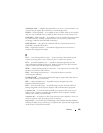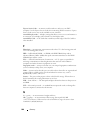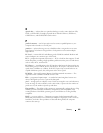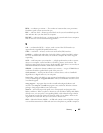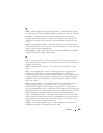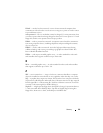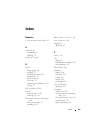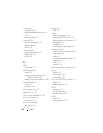
Glossary 207
RPM — revolutions per minute — The number of rotations that occur per minute.
Hard drive speed is often measured in rpm.
RTC — real time clock — Battery-powered clock on the system board that keeps the
date and time after you shut down the computer.
RTCRST — real-time clock reset — A jumper on the system board of some computers
that can often be used for troubleshooting problems.
S
SAS — serial attached SCSI — A faster, serial version of the SCSI interface (as
opposed to the original SCSI parallel architecture).
SATA — serial ATA — A faster, serial version of the ATA (IDE) interface.
ScanDisk — A Microsoft utility that checks files, folders, and the hard disk’s surface
for errors. ScanDisk often runs when you restart the computer after it has stopped
responding.
SCSI — small computer system interface — A high-speed interface used to connect
devices to a computer, such as hard drives, CD drives, printers, and scanners. The
SCSI can connect many devices using a single controller. Each device is accessed by an
individual identification number on the SCSI controller bus.
SDRAM — synchronous dynamic random-access memory — A type of DRAM that is
synchronized with the optimal clock speed of the processor.
serial connector — An I/O port often used to connect devices such as a handheld
digital device or digital camera to your computer.
Service Tag — A bar code label on your computer that identifies your computer when
you access Dell Support at support.dell.com or when you call Dell for customer service
or technical support.
setup program — A program that is used to install and configure hardware and
software. The setup.exe or install.exe program comes with most Windows software
packages. Setup program differs from system setup.
shortcut — An icon that provides quick access to frequently used programs, files,
folders, and drives. When you place a shortcut on your Windows desktop and double-
click the icon, you can open its corresponding folder or file without having to find it
first. Shortcut icons do not change the location of files. If you delete a shortcut, the
original file is not affected. Also, you can rename a shortcut icon.
SIM — Subscriber Identity Module — A SIM card contains a microchip that encrypts
voice and data transmissions. SIM cards can be used in phones or portable computers.



